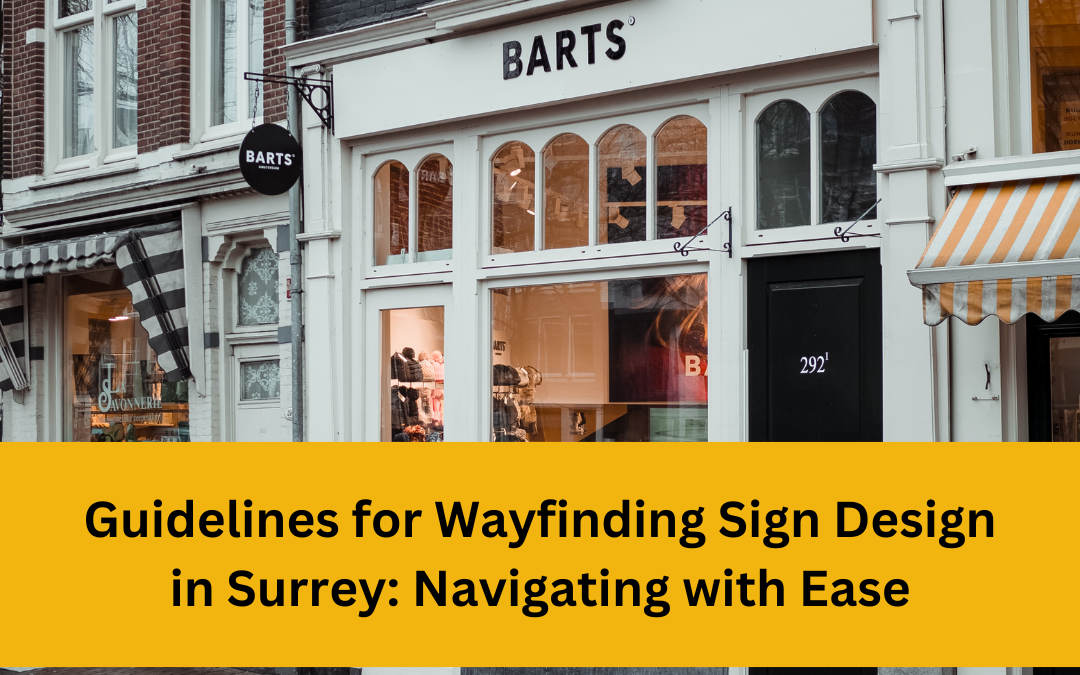Wayfinding Signage Design Guidelines in Surrey
Navigating through unfamiliar places can be a daunting task, but with the right wayfinding signage, the journey becomes a breeze. Whether you’re a business owner, a designer, or someone interested in enhancing navigation in Surrey, these guidelines will help you create effective and user-friendly wayfinding sign.
Understanding Wayfinding Signage
Wayfinding signage is all about helping people navigate their surroundings. These signs provide clear and concise information that directs individuals to their destinations, minimizing confusion and frustration. Imagine finding your way through a bustling city or a large complex – that’s where wayfinding signs come to the rescue!
Consider Your Audience
Before diving into the design process, consider who will be using the wayfinding signs. Are they tourists exploring the city, shoppers in a mall, or patients in a healthcare facility? Understanding your audience’s needs and preferences is crucial for creating signage that resonates with them.
Choosing the Right Locations
Place wayfinding signs where they’re most needed. Entrances, exits, intersections, and points of interest are great spots. The goal is to provide information at decision points, ensuring that people can make informed choices about their next steps.
Designing Effective Wayfinding Signs
When designing the signs, remember the KISS principle: Keep It Simple and Straightforward. Use large, legible fonts, contrasting colors for text and background, and minimalistic icons to convey information quickly. Less is often more when it comes to effective signage.
The Importance of Consistency
Consistency is key to a successful wayfinding signage system. Stick to a coherent design theme, including font styles, color palettes, and iconography. This uniformity makes it easier for users to recognize and understand the signs across different locations.
Accessibility Considerations
Inclusive design is paramount. Ensure your wayfinding signs are accessible to people with disabilities. Use high contrast colors, Braille translations, and clear pictograms. This way, everyone can confidently find their way around, regardless of their abilities.
Getting Feedback and Making Improvements
Once your wayfinding signs are in place, gather feedback from users. This valuable insight can help identify any issues or areas for improvement. Maybe a sign’s placement isn’t as intuitive as you thought, or certain information needs to be highlighted more. Don’t be afraid to make adjustments to enhance the overall wayfinding experience.
Conclusion: Navigating with Confidence
In conclusion, by following these wayfinding sign design guidelines in Surrey, you’re well-equipped to create a navigation system that makes everyone’s life easier. Remember, understanding your audience is crucial; therefore, strategic placement, clear design, consistency, accessibility, and continuous improvement are the cornerstones of effective wayfinding. So go ahead and help people find their way around Surrey effortlessly!
Remember, navigating a new place should be an adventure, not a challenge. And with well-designed wayfinding signs, it can be just that—an exciting journey of discovery.
Ready to transform navigation in Surrey? Let Sign Hub be your partner in creating outstanding wayfinding signage solutions. To learn more, visit our website at www.signhub.ca and explore how we can help you navigate the path to success.


